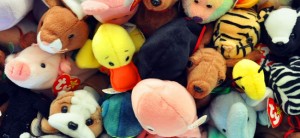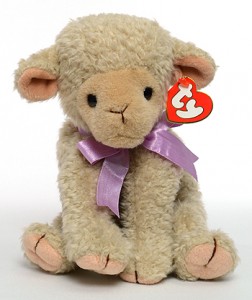Most people remember Beanie Babies: the cute floppy animals stuffed with beans. There were hundreds of kinds at the height of their time: dogs, cats, bears, fish, squirrels, etc. They were a huge part of late 90’s culture, and many Americans were desperate to have them. American adults… not children. In 1998, Beanie Babies had sales of $1.4 billion. Stores that carried Beanie Babies were being mobbed by collectors and sold out in days. People were investing their childrens’ college funds into them, and dedicating their time to day trading stuffed animals.
It was madness. Why were people pouring their life savings into toys?

Ty Warner was the creator of Beanie Babies. He was originally a top salesman for Dakin, the leading plush toy company at the time. He was a shrewd businessman, and was fired for trying to create his own toy line on the side. He created the company Ty, where the first Beanie Baby (Legs the Frog) was born. The floppy animals, stuffed with beans, were truly innovative and took the market by storm when Warner first introduced them.
However, he began to struggle with one of his Chinese suppliers. Because of the shortage, Lovie the Lamb had to be discontinued.

Instead of telling his customers that Lovie was “discontinued”, he said the toy was “retired”. The use of the word “retired” changed how consumers framed Lovie’s shortage. This was no longer just an issue of low supply, it was a scarcity – and scarcity meant what was left could be much more valuable. Warner was using artificial scarcity, by framing the toy as being “retired” instead of “discontinued” he increased Lovie’s intrinsic value and ultimately it’s demand. Lovie the Lamb was the first retired Beanie Baby, and Warner’s ticket to a billion dollar business.
Warner’s strategy worked. By 1998, parents were paying double or triple the retail price for “retired” Beanie Babies. Beanie Baby handbooks with catalogues of Beanie Babies and their prospective prices were being sold everywhere. A USA Weekly poll found that 64% of Americans claimed to own at least one Beanie Baby. Peggy Gallagher, a collector from Chicago, once bought 30 “Chilly the Polar Bear” Beanie Babies from Ty’s Germany supplier at $7 each and later sold them for $1800 each. Gallagher’s extensive experience with collecting Beanie Babies led to her publishing her own Beanie Baby pricing list. Her collecting was so widespread that her pricing list began to direct the market exactly where she wanted it to go, despite not basing her prices on anything in particular. Ty’s website would announce and speculate future retirements, which prompted collectors and sellers to put certain Beanie Babies up for sale. Two years of massive success, huge profits, high demand and inflated prices had created a bubble, a fragile economic state characterized by high demand and consumption of an item.
Gallagher was one of the first collectors, and also one of the few to make significant profit from the Beanie Baby craze. Many collectors hoped to “invest” in Beanie Babies, wait for their purchases to become retired and then sell them at a profit. Unfortunately, many guessed wrong and their stuffed toys never retired, making them near worthless.
The bubble burst right after after Christmas, in January 1999. Warner had announced new retirements, but prices didn’t budge. For the first time, prices didn’t skyrocket for retired Beanie Babies. Warner had also announced 24 new Beanie Baby toys, and he unknowingly brought the market to equilibrium, and burst the Beanie Baby Bubble.
No scarcity, no profits. Supply had increased to match demand and the craze was dying. Beanie Babies were seen selling for $3 at flea markets and retired Beanie Babies were back to retail price by the next year, in early 2000. Warner’s eagerness to increase sales had overwhelmed collectors and caused the fall of the Beanie Baby empire.
Look into Zac Bisonette’s “The Great Beanie Baby Bubble” for more information about Beanie Babies and Ty Warner.
